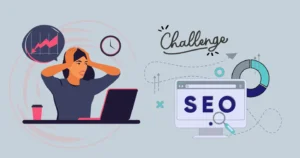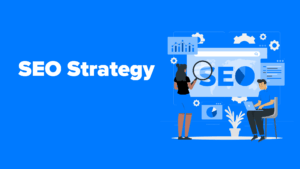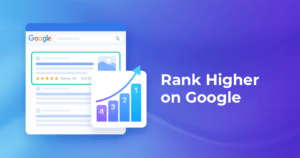A Comprehensive Guide to SEO is essential for businesses aiming to enhance their online presence. This guide covers all aspects of Search Engine Optimization, from keyword research and on-page optimization to off-page strategies like link building. Understanding how search engines rank websites is crucial for creating content that drives organic traffic. A Comprehensive Guide to SEO also includes insights on technical SEO, ensuring that your website is fast, mobile-friendly, and easy to navigate. By implementing the strategies outlined in a Comprehensive Guide to SEO, businesses can improve visibility, attract targeted audiences, and achieve long-term growth in a competitive digital landscape.
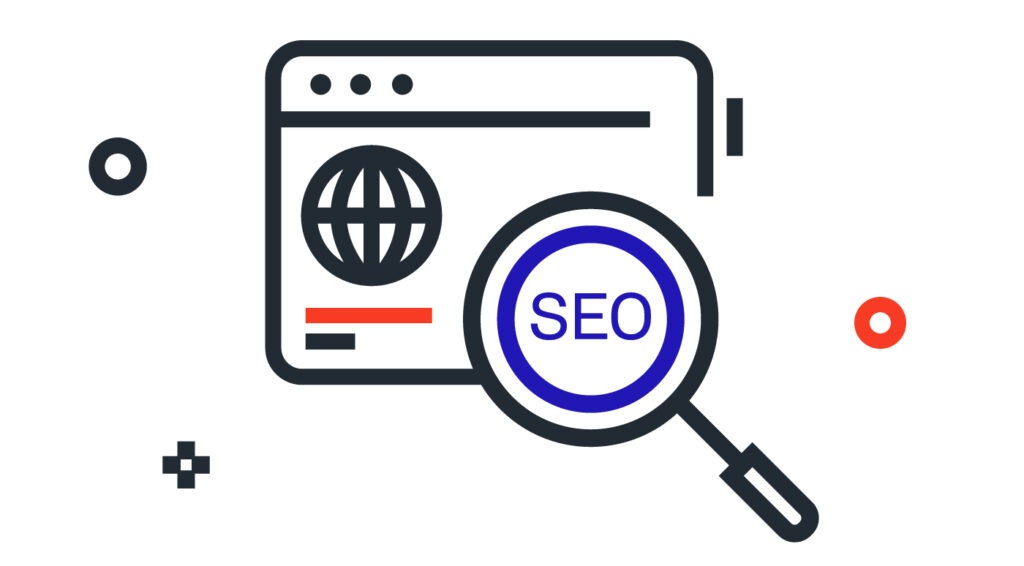
Table of Contents
What Is SEO?
SEO, or Search Engine Optimization, encompasses a variety of strategies and techniques designed to enhance a website’s visibility on search engines like Google, with the primary objective of increasing organic traffic. Essentially, SEO focuses on addressing users’ search intent by crafting relevant, high-quality content and delivering an optimal user experience.
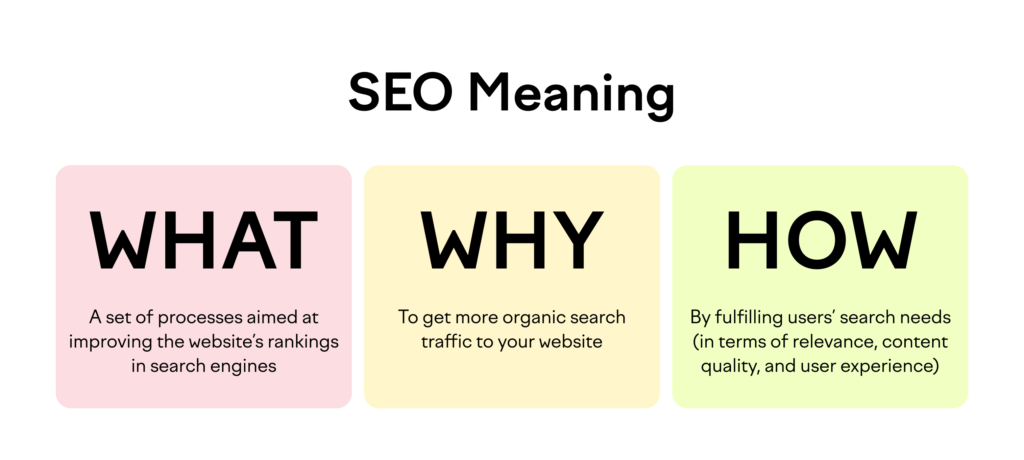
Understanding SEO: Definition, Importance, and Implementation
SEO efforts can be broadly categorized into two main areas: on-site and off-site optimization. Consequently, SEO is often divided into “on-page” and “off-page” activities.
In practice, the implementation of SEO generally includes:
- Keyword Research: Identifying the terms and phrases that potential visitors use when searching for relevant information or products.
- Content Creation and Optimization: Developing and refining content to ensure it meets the needs of users and aligns with search engine algorithms.
- Technical Optimization: Enhancing website elements such as site speed, mobile-friendliness, and secure connections to improve search engine crawling and indexing.
- Link Building: Acquiring links from other reputable websites to boost the authority and credibility of your site.
Why Is SEO Crucial?
Every day, billions of searches are conducted on Google alone, making search engines a major source of web traffic. To capitalize on this traffic, it is essential for your website to rank prominently in search results for your target keywords.
The relationship between search ranking and website traffic is straightforward—the higher your website ranks in search engine results, the more likely users are to visit your page. For instance, the top organic search result is ten times more likely to be clicked compared to a page that ranks tenth. Moreover, the top three organic search results collectively attract over 50% of all clicks.
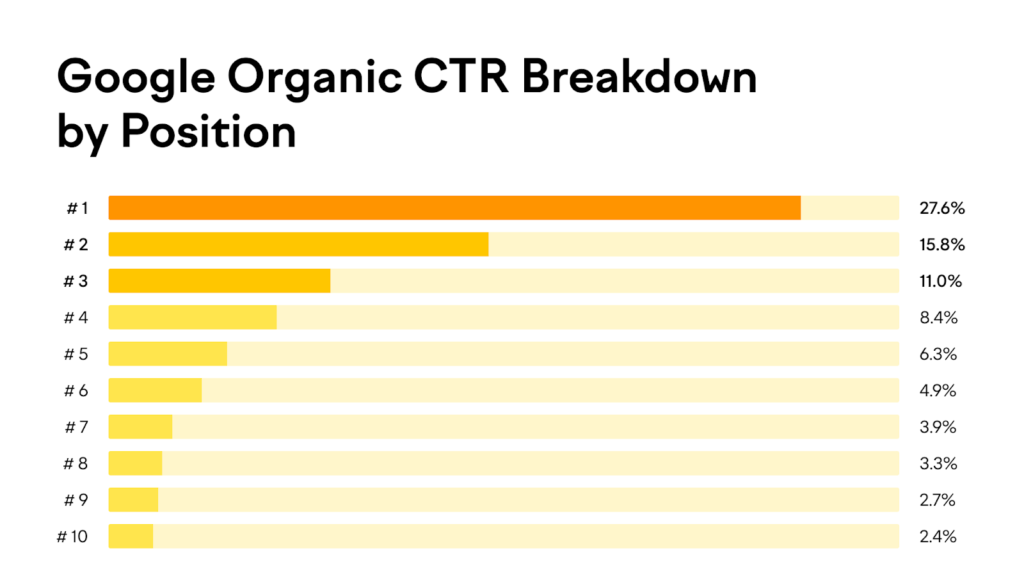
This is where SEO becomes critically important. Effective search engine optimization is key to improving your website’s ranking positions. Higher rankings translate into increased traffic, which in turn leads to new customer acquisition and enhanced brand visibility.
In summary, ignoring SEO means missing out on a significant traffic channel and leaving opportunities open for competitors to seize. Properly executed SEO is vital for maintaining and enhancing your online presence and competitiveness in the digital landscape.
How Do Search Engines Operate?
At the heart of every search engine’s mission is the aim to satisfy users by delivering the most relevant and useful results for their queries. To accomplish this goal, search engines must identify and showcase the best web pages available.
While Google is the most widely used search engine and often the primary focus in discussions about search engines, it’s important to note that it is not the only player in the field. The principles of SEO are quite similar across most search engines, even though the specifics may vary.
Google follows a multi-step process to discover, evaluate, and rank web content:
- Crawling: Google deploys automated programs known as “bots” to traverse the web and locate new or updated pages. For a page to be discovered by Google’s bots, it needs to be linked to from another page. These links serve as pathways for the bots to find and access the page.
- Indexing: Once a page is located, Google’s systems analyze its content to understand what it is about. This analysis helps Google categorize the page and determine its relevance. The information is then stored in what is known as the Google Index—a vast repository of web pages that Google uses to retrieve information for search queries.
- Serving Results: When a user performs a search, Google sifts through its index to find the most relevant pages based on quality and relevance. These pages are then ranked and presented in the search engine results pages (SERPs), with the most pertinent results appearing at the top.
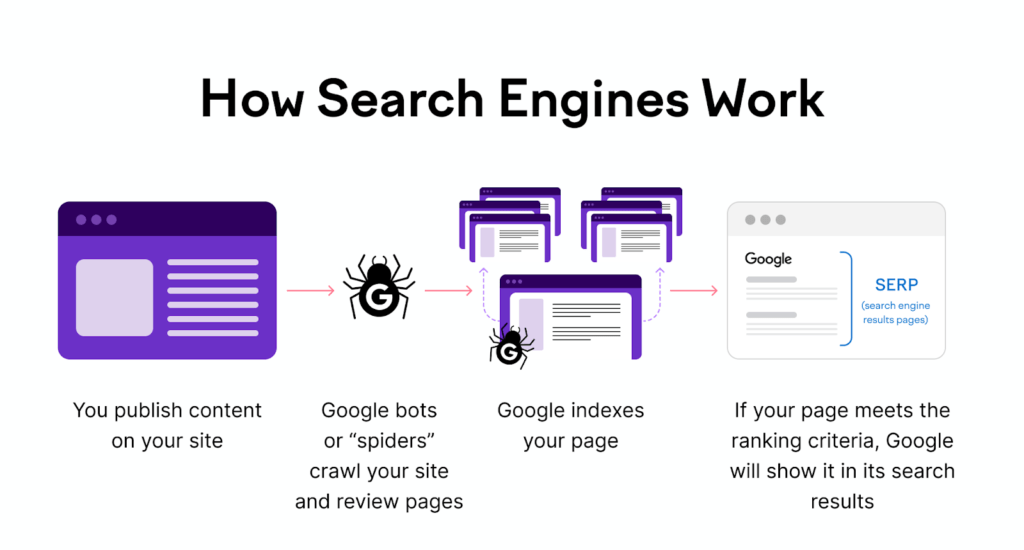
As a website owner, your role is to facilitate this process by making it easy for search engines to crawl and index the pages on your site. This means ensuring that all your important pages are accessible and that irrelevant or outdated pages are properly managed.
This is where technical SEO comes into play. By implementing best practices for technical SEO, you can improve the crawlability and indexability of your website, helping search engines effectively discover and understand your content.
With a clear grasp of how search engines find and categorize web pages, the next step is to delve into how search engines select the top results and the critical role that SEO plays in this selection process. Understanding these elements can significantly enhance your ability to optimize your site for better visibility and performance in search results.
How Does SEO Function?
SEO, or Search Engine Optimization, involves intricate processes orchestrated by search engines like Google to determine the ranking of web pages. These processes are governed by complex algorithms that evaluate a multitude of factors to decide the positioning of a page in search results.
While the exact workings of these algorithms are not fully disclosed and remain somewhat of a mystery, having a foundational understanding of their basic principles can greatly enhance your ability to optimize your web pages effectively. Although the precise details of these algorithms are known only to the search engines themselves, grasping the core concepts of SEO will help you make informed decisions about how to improve your site’s visibility.
Ensuring Content Relevance
At the heart of SEO is the imperative to deliver content that is highly relevant to users’ queries.
Why is this so crucial?
Because the primary mission of Google is to present users with results that are most pertinent to their search intent. Relevance extends beyond simply matching search terms to the content on a page. It involves understanding and addressing the underlying intent behind the search query—what the user is actually looking to achieve with their search.
Search intent can generally be categorized into four main types:
- Navigational Intent: Users are looking for a specific website or page, such as searching for “Spotify login.”
- Informational Intent: Users seek general information about a topic, like “What is Spotify?”
- Commercial Intent: Users are considering a purchase and are seeking reviews or comparisons, for instance, “Spotify review.”
- Transactional Intent: Users are ready to make a purchase or complete a transaction, such as searching for “Spotify Premium.”
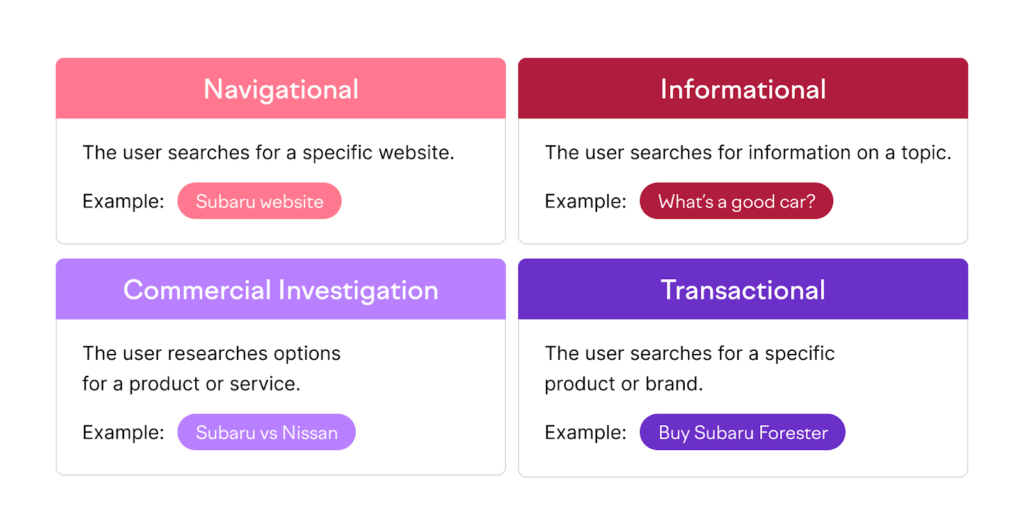
Understanding Search Intent with an Example
For instance, if someone searches for “best dog food,” they are likely looking to purchase dog food or read reviews about the best options available. They’re not just interested in articles about dog diets or homemade recipes. Google recognizes this intent based on patterns observed from countless other searches. Therefore, it prioritizes pages that offer product listings or comprehensive reviews related to dog food, aligning with either a commercial or transactional intent.

How to Align Your Content with Search Intent
To ensure your page aligns with search intent and ranks well, follow these steps:
- Analyze Search Results: Examine the top results for the keyword in question. This can give you insight into the types of content that are being favored by Google for that particular search query.
- Topical Relevance: Google evaluates a page’s relevance based on the keywords and phrases used. Optimize your content for these keywords, but be careful not to overuse them.
- Content Type: Ensure your content matches the format that is ranking well for your targeted keywords. For example, if the top results are product pages or reviews, your content should align with this format.
- Content Freshness: Certain topics, such as news or product reviews, need to be updated frequently. Ensure that your content remains current if the search query is time-sensitive.
- Location Considerations: Google might tailor search results based on the user’s location. If you’re running a local business, it’s essential to implement local SEO practices to cater to this geographical specificity.
By focusing on these elements, you can enhance the relevance of your content and better align with the search intent of your audience, thereby improving your chances of achieving higher rankings in search results.
SEO vs. PPC: Understanding the Differences
When you look at a search engine results page (SERP), you’ll typically notice two primary types of results:
- Paid Results: These appear as advertisements and require payment through a method known as pay-per-click (PPC) advertising. Essentially, you’re paying for the privilege of having your site appear in these ad slots.
- Organic Results: These are achieved through SEO (Search Engine Optimization). To appear here, you need to earn your ranking by optimizing your site and content according to search engine algorithms.
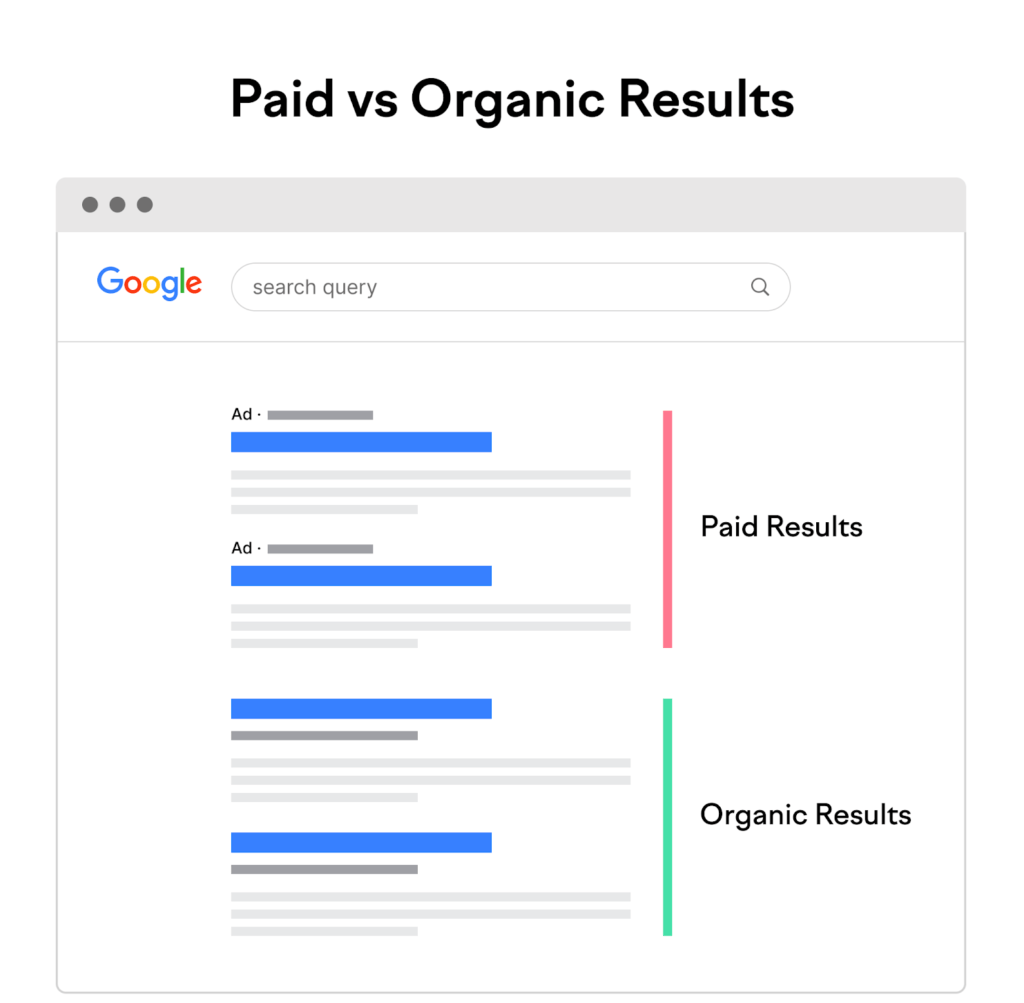
Why Not Just Opt for PPC?
You might wonder why more businesses don’t simply choose PPC to secure a spot at the top of the results page. The reason is straightforward: a significant portion of users tend to overlook paid advertisements and instead click on the organic search results. Many people prefer to trust the organic listings as they believe these results are more credible and relevant.
Although PPC offers immediate visibility, it requires continuous funding. The moment you stop paying for ads, your presence disappears from the results. In contrast, SEO is a long-term strategy that demands time, effort, and resources to implement effectively. However, once your site achieves a high ranking for your target keywords, you can attract more traffic in a more sustainable manner.
With SEO, you’re not just paying for clicks; you’re working to build a strong online presence that can generate ongoing, “passive” traffic. This traffic continues to flow even after you’ve invested time and resources into your SEO efforts, unlike PPC, where visibility is directly tied to your advertising budget.
In summary, while PPC provides quick results and increased visibility, SEO offers the potential for lasting impact and continuous traffic without the need for ongoing payments.
How to Start?
The very first thing we need to do is to identify and get keywords. To quickly identify a keyword’s intent, use a tool like Keyword Overview.
Enter your keyword and click “Search.”
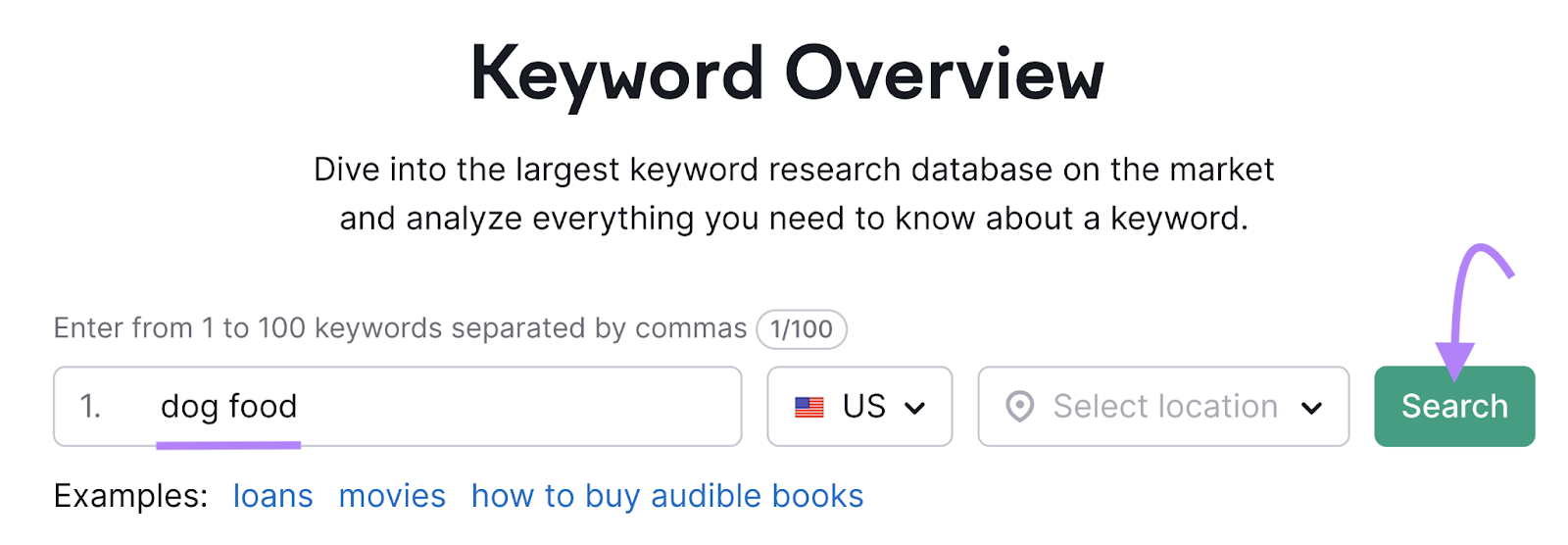
You’ll see the intent in the widget labeled “Intent.”
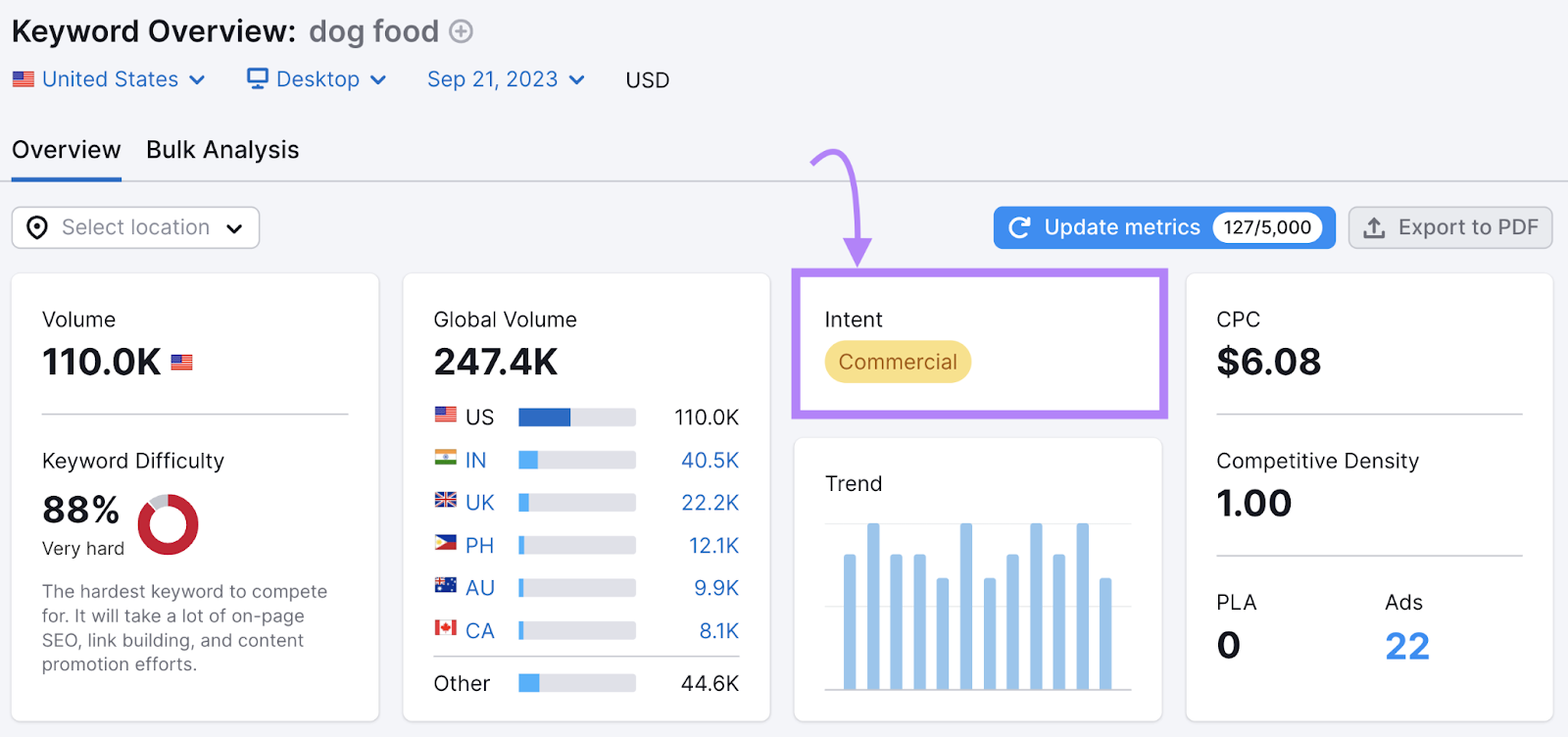
And if you’re doing keyword research, the Keyword Magic Tool also displays intent.
Like this:
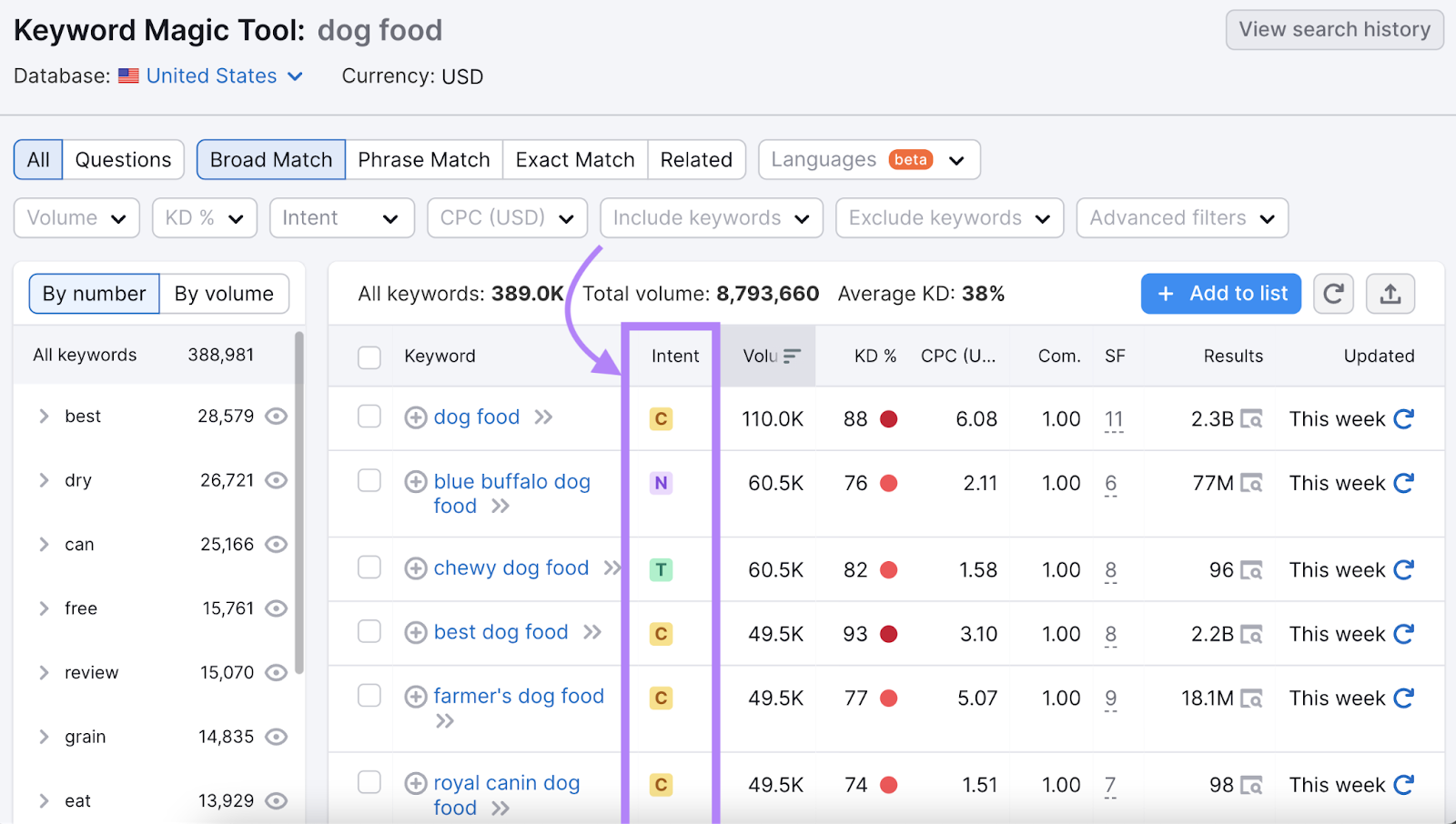
Creating Quality Content
Creating high-quality content is an essential part of a successful SEO strategy. While identifying the right keywords is crucial, it’s only the beginning. The next critical step is crafting content that not only includes these keywords but also ranks well in search engine results. Content creation and optimization are two indispensable components of SEO that work hand in hand to improve your website’s visibility.
When asked about the most significant factor for ranking highly on Google, John Mueller, a prominent figure at Google, responded with a single word: “Content.” This simple yet powerful response underscores the importance of producing content that stands out in a crowded digital landscape. To secure a spot among the top 10 results on a search engine results page (SERP), your content needs to be exceptional—one of the best pieces available on the subject.
There are several key characteristics that distinguish high-quality content from the rest:
- Comprehensiveness: High-quality content should thoroughly cover the topic at hand, answering any questions that a visitor might have. It’s not merely about the length of the article but about the depth of information provided. Each page should serve as a complete resource, satisfying the searcher’s intent fully.
- Uniqueness: Your content should offer something different from what’s already out there. Instead of simply compiling information from top-ranking pages, aim to provide unique value. This could be through a new perspective, exclusive data, practical examples, or original visuals that add depth to the content.
- E-E-A-T Signals: Google places significant emphasis on Experience, Expertise, Authoritativeness, and Trustworthiness (E-E-A-T). To rank well, your content must be accurate and reliable, reflecting your expertise on the subject. Demonstrating this expertise both on-site and through external validation is crucial for building trust with both users and search engines.
- Readability: Your content should be easy to read and understand. This means organizing it logically, using short sentences, and maintaining a consistent tone of voice. Avoiding complex jargon, passive voice, and long, winding sentences helps ensure that your content is accessible to a broader audience.
In conclusion, to achieve top rankings in search results, it’s not enough to just target the right keywords. Your content must be among the best available, offering comprehensive, unique, and trustworthy information that is also easy to read. By focusing on these elements, you’ll be well on your way to improving your site’s visibility and performance in search engine rankings.
7 Essential Truths About SEO
Understanding the fundamentals of SEO is crucial, but before diving into the world of search engine optimization, there are seven key truths you should internalize to set the right expectations and approach:
- SEO is About Adding Value, Not Cheating the System: SEO isn’t about trying to outsmart Google with tricks or shortcuts. Instead, it’s about demonstrating to Google the genuine value your page offers to users. The goal is to align your content with what users are searching for, providing them with meaningful, relevant, and valuable information that deserves to be ranked highly.
- Avoid the Temptation of SEO Hacks: While it might be tempting to chase after the latest SEO tricks or hacks, true success lies in mastering the basics. Focus on doing the foundational SEO tasks—like keyword optimization, content creation, and link building—exceptionally well and with consistency. These core practices, done right, will deliver long-term results, whereas quick fixes often lead to short-lived gains.
- SEO Requires Patience—It’s a Long-Term Strategy: SEO isn’t a quick-fix solution. Results typically take time to materialize, often requiring months of consistent effort. There are occasional exceptions, such as when you address a critical issue on your site that provides an immediate boost. However, for the most part, you need to think in terms of months, not days, to see significant progress.
- SEO Goes Beyond Installing a Plugin: While SEO plugins can be valuable tools, simply installing one doesn’t make your site automatically optimized for search engines. These plugins offer assistance, but they are just one part of the larger SEO puzzle. True optimization requires ongoing effort in content, technical SEO, and user experience enhancements.
- SEO is an Ongoing Process—You’re Never Truly Done: SEO is not a one-time task that you can check off your to-do list. It’s a continuous process of improvement and adaptation. Even if you achieve top rankings for your targeted keywords, you must continue refining your strategy. Competitors are always evolving, and search algorithms are constantly being updated, so complacency is not an option.
- Understanding Your Audience is Critical: The better you know your audience, the more effectively you can tailor your SEO strategy. Understanding their needs, preferences, and search behaviors allows you to create content that resonates with them and meets their expectations, which in turn, improves your SEO performance.
- SEO is Just One Piece of the Puzzle: While SEO is a vital component of digital marketing, it’s not the only factor that determines your success. No amount of optimization will compensate for a weak product or service. Your core business offerings must be solid, as SEO works best when it’s integrated with strong overall business practices, including product development, customer service, and branding.
Taking the First Steps in Your SEO Journey
Now that you have a clearer understanding of what SEO entails, it’s time to take action and implement what you’ve learned. By following the tips mentioned above, you’ll be on your way to achieving higher rankings and gaining an edge over your competitors.
To get started, consider signing up for a free Semrush account—no credit card required. This platform offers a wealth of tools to help you kickstart your SEO efforts, including:
- Conducting keyword research (up to 10 searches per day)
- Analyzing competitors (up to 10 domains per day)
- Tracking your keyword rankings (up to 10 keywords)
- Running a free site audit (crawl up to 100 URLs)
- Gaining insights for improving your on-page SEO (up to one campaign)
These tools provide a comprehensive suite to help you optimize your site effectively.
Frequently Asked Questions About SEO
What Role Does SEO Play in Digital Marketing?
SEO plays a critical role in enhancing the visibility of your website on search engines, making it a cornerstone of any digital marketing strategy. It works synergistically with other marketing efforts, such as PPC advertising, content marketing, and social media marketing, to drive traffic and conversions.
Can I Handle SEO on My Own?
Yes, you can definitely manage your own SEO without needing to hire a professional or agency. With a willingness to learn and a hands-on approach, you can apply SEO strategies to your website effectively.
How Do I Begin Learning SEO?
This guide is a great starting point for your SEO journey. If you’re looking to dive deeper, especially with video content, Semrush Academy offers a variety of 100% free online courses taught by industry experts like Eric Enge, Brian Dean, and Nathan Gotch.
Do I Need an SEO Tool?
Yes, having an SEO tool is essential, especially if your website generates revenue. Accurate data is crucial for making informed decisions, and a complete SEO toolset will pay for itself by helping you optimize your site effectively and efficiently.


